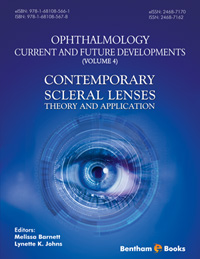Abstract
When modern scleral lenses became popular, the instruments used to help evaluate the health of the cornea and conjunctiva in the presence of the lenses were somewhat rudimentary. Practitioners observed the cornea and conjunctiva with the biomicroscope, used manual keratometry or Placido topography to map the corneal curvature, and relied on sodium fluorescein to judge the depth of the post-lens tear reservoir. The instrumentation industry quickly fills unmet needs, and the scleral lens market is no exception. In fact, the pace of innovation of instrumentation that is used to evaluate these relatively complex medical devices has been, and will continue to be, dramatic for years beyond the publication of this textbook. At the time of publication, currently available instrumentation is reviewed and may likely change with innovation and technology. Innovations and advances in modern imaging technology have enhanced traditional methods of scleral lens fitting. While not every piece of equipment is required for fitting scleral lenses, any additional information provided by unique instrumentation aids the practitioner to achieve fitting success.
Keywords: Clearance, Confocal, Documentation, Endothelial cell, Frequency domain, Lens thickness, OCT, Oxygen, Pachymetry, Pentacam, Photography, Sagittal depth, Scan, Scheimpflug, Scleral topographers, Technology, Time domain, Topography, Ultrasound, Vault.






















